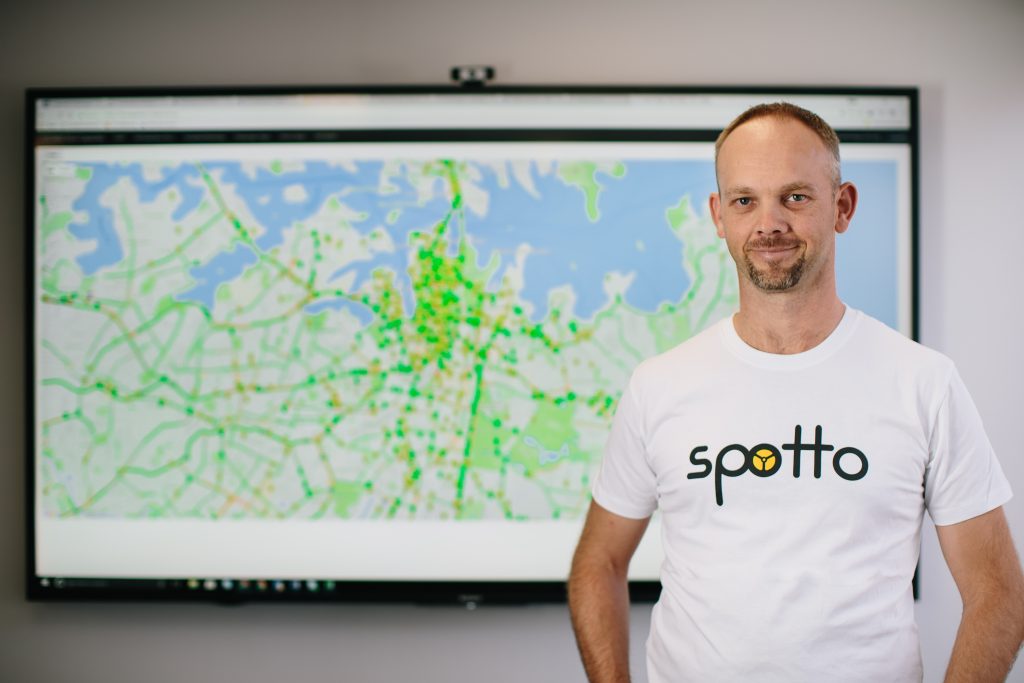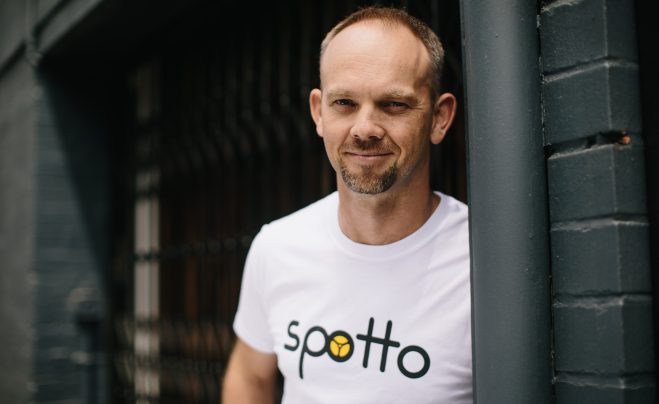
Digital Transformation
Cabcharge hitches rapid ride to the future with intelligent Cloud platform
Cabcharge has been a continuous innovator since it delivered Australia’s first in-taxi electronic funds transfer solution over two decades ago – but continuing digital disruption impacting the sector has further spurred the company’s transformation.
The digital innovation underway at the company is already bearing financial fruit; of the total $950 million of taxi fares processed by Cabcharge in the 2017 financial year, $22.3 million was processed through Spotto & Giraffe Payments – new mobile EFTPOS merchant offerings with a companion mobile app. By June, the volume of fares processed through Spotto & Giraffe Payments reached an annualised $71 million, and by August it rose again to a run rate of $100 million annualised.
Over the last 16 months the company has accelerated its digital innovation agenda with Deon Ludick, Chief Technology Officer, at the helm. Ludick, the company’s first CTO, reports to Cabcharge CEO Andrew Skelton who has been bullish in investing in and transforming the business. Over the coming financial year, Skelton is dedicating $8 million to invest in technology and marketing.
Digital transformation
On arrival at Cabcharge, Ludick discovered a wealth of payments knowledge resident in the organisation. Besides serving the needs of its taxi fleet, Cabcharge supplies payments services to organisations such as Westpac, Australia Post and Woolworths.
But Ludick was also greeted by a series of legacy technology solutions and approaches to development which were still anchored in waterfall processes.
He immediately set about establishing an Agile culture based around small, cross-functional “squads” working in short iterations, empowered (and encouraged) to experiment and innovate. He has also promoted the upskilling of development teams particularly around web design and User Experience (UX).
Ludick engineered a move from legacy platforms to the cloud in order to deliver the speed, agility and scale that he felt Cabcharge needed to succeed.
When it came to selecting which cloud provider best suited Cabcharge’s ongoing needs, Ludick says; “We wanted to select one provider, commit to their eco-system and build a strong partnership, rather than having many relationships we would need to manage”
“We were looking for a platform as a service (PaaS) provider and looked at 16 possibilities”, Ludick says. He ultimately selected Microsoft Azure and its surrounding ecosystem, recognising the out-of-the-box capabilities abundant in the Microsoft stack that would help accelerate Cabcharge’s ongoing transformation.
Rapid innovation
The transition to cloud computing and an agile approach to software development allows the company to iterate and innovate rapidly.
For example, the cloud-based travel management platform Cabcharge Plus, launched in May 2017, provides Cabcharge account users better visibility and insight, resulting in greater cost control and reductions in administrative burden. All electronic trip information is available in real time with maps, and receipts can be exported for reporting and analysis.
With Azure selected as the innovation ecosystem and foundation for the future Ludick is now planning a migration to Dynamics 365 mid 2018 to promote deeper interactions and a better understanding of clients’ and prospects’ needs and expectations. “Dynamics 365 will also make Cabcharge digitally more mature”, says Ludick, “which is important in providing the sort of consumer experience that people expect. Having a central view of the customer will help to make every experience feel unique and give us extra insights about how you travel with us.”
Cabcharge’s 13CABS, Silver Service and Yellow Cabs brands field around 8,500 taxis across Australia. For consumers, the 13CABS and Silver Service mobile apps incorporate secure two-tap booking, driver rating systems, and in-app payment options with additional functionality on the way.
The 13CABS driver app provides two way communication between the driver and taxi network, and allows the driver to monitor and manage bookings.
Both apps also include the popular Passenger Connect feature allowing the driver and passenger to connect anonymously to ensure a successful trip takes place.
The company’s new payment offering – Spotto, targeted at drivers – allows them to collect payments from passengers and receive the fares directly. Recognising that speed is important in the changing financial services industry, Spotto was designed with a digital onboarding experience that delivers a fully functional merchant facility in ten minutes – an industry first.
From deliverables to impact
“The first project we did was the travel management solution, Cabcharge Plus – where account customers can administer, visualise and report on how people are using Cabcharge products inside their organisation,” says Ludick.
It’s been a major success already which Ludick attributes to the fact that the Cabcharge’s development teams have shifted their “obsession from deliverables to impact”. New features are tested in the concept phase with real users, and expected impacts are validated once features are released.
This combination of modern UX and Lean Startup techniques allows Ludick’s teams to focus on achieving the biggest impacts rather than the most features.
And this improved focus has resulted a steady stream of Cabcharge clients using the Cabcharge Plus portal to get more visibility about their Cabcharge usage and costs, with over one hundred business accounts added to the portal each month.
Ludick believes that these early adopters are changing the way they use Cabcharge as a result of the additional transparency and insight.
User-focussed solutions
Building on a resilient and trusted cloud foundation and rich supporting ecosystem means that Cabcharge can now focus on creating user-focussed solutions rather than managing the computing infrastructure itself.
“Our choice of PaaS and ubiquitous use of Microsoft’s Application Insights has delivered clear gains in IT operations and awareness of how our systems perform.”
“It also injects flexibility for developers”, says Ludick.
“With the tech stack we are not prescriptive. We have adopted an API-first microservice strategy – as long as it’s behind an API we’re not rigid in how you build it. We let developers choose what tools they want to work with – whether it’s .Net or Node.js, Vim or Visual Studio.”
But to ensure the obsession remains on impact rather than simply deliverables Ludick has steered deep research into understanding what corporate clients, taxi drivers and consumers want. That insight helps focus development efforts toward the highest impacts.
For the Spotto product, in-house User Experience (UX) specialists created two driver personas named “Jim” and “AJ” to create both greater empathy for drivers within the development teams and provide virtual users to explore and test new features. These modern UX practices are now becoming commonplace in digital product development at Cabcharge.
Ludick’s team is currently working on how to make more use of GPS data and geo-matching in order to enhance the experience for both driver and consumer – but again the solutions are tested against expected impact rather than just adding bells and whistles.
Spotto is one of the recent developments created on Azure which is having genuine impact. The Spotto payment terminal allows drivers to sign up in ten minutes for a fully configured end-to-end tested merchant facility.
As soon as drivers are onboarded to Spotto, they recieve an invite to register for the cross-platform companion Spotto app, on which drivers can see their transactions in real time.
Over four thousand Spotto payment terminals have been rolled out and the product is one of Cabcharge’s biggest successes since Ludick’s digital transformation began. As he explains, “signing up for a Spotto is a slick, frictionless experience – in around 10 minutes a driver can be onboarded, be given a terminal, install the app and they’re ready to use the device to process payments.”
The Flux Capacitor
The Flux Capacitor was featured in the Back to the Future movies as a time travelling device, but internally it is the nickname for Cabcharge’s mass of devices that connect via the Azure Iot Hub. “It’s got real potential for Cabcharge”, says Ludick.
With the Azure Iot Hub, Ludick and his team are able to let their imaginations fly as they are no longer bogged down by the minutiae of keeping the computing lights on. Instead they can leverage the Azure stack and focus on innovative solutions that allow them to compete more effectively.
“In the digital era passengers demand both great service and a great app experience.
“When booking a trip passengers want certainty – to know when their cab is coming.
“The best technology we had available before we had the IoT Hub were GPS updates every thirty seconds during the dispatch of a taxi.”
That wasn’t sufficient at a time when taxi competitors were providing real time data.
In response, Ludick and his team came up with an idea that became the Flux Capacitor. The company could already connect to its payment and dispatching systems in over 22,000 taxis across Australia, but connecting these devices to the Azure IoT Hub allowed Cabcharge to generate more and better data. For example, when a passenger’s booked cab is approaching, the car’s GPS tracking capability enters “beast mode”, giving the passenger location updates every second. Once the passenger is picked up the tracking capability goes back to its normal pace of activity.
It’s this “Flux Capacitor” that takes Cabcharge into the future – augmenting existing legacy products with the latest in IoT technology to deliver dramatic service improvements for consumers.
“Consumer expectations are now higher – we only have your attention for a nanosecond so we must not waste it. When you book a cab with us we can give you the certainty and the full feature-set of our digital competitors,” Ludick says.
And even consumers without the 13CABS app can benefit – as people who book a cab via the call centre can recieve an SMS alert when their taxi is approaching. Soon, anybody booking with a mobile number (even through the contact centre) will be able to track the car’s approach in real time.
It’s taken some serious optimisation on the back end – putting a cab’s GPS device into “beast mode” increases data traffic from 5 MB per month to around 50 MB – but Ludick says the solution is working well and delivering real benefits.
Passion for innovation
Besides adding insight for corporate customers using the portal and real-time information for the travelling public, Ludick is constantly looking for ways to leverage their technology stack and cutting-edge delivery capability. One of Cabcharge’s latest innovations allows iPhone users to book a cab using Siri. “Two voice commands and a cab is on its way to you,” boasts Ludick.
Transport is an industry being disrupted not just by technological innovation, but also by entirely new services such as ride sharing. In time, the emergence of autonomous vehicles will likely generate a new array of challenges – and opportunities – for established players.
With Azure, an agile approach to development and a passion for innovation Cabcharge is positioned to succeed.
Source for financial /corporate data: https://www.cabcharge.com.au/shareholder-information/shareholder-news

















